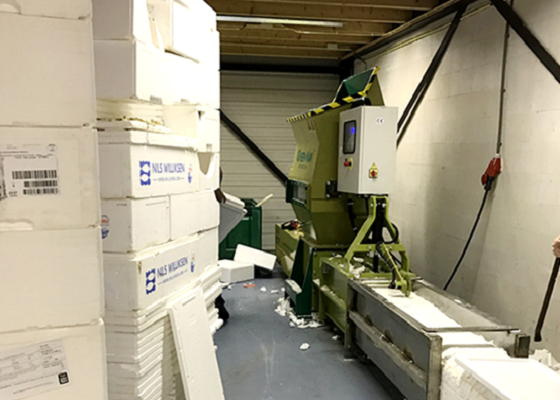Landfilling Polystyrene will cause many harms to the soil and natural environment. Polystyrene is a common plastic material widely used in packaging, construction and other consumer products such as disposable cups, cutlery, food containers, foam sheets, etc. However, due to its chemical properties and persistence, landfilled polystyrene has long-term negative impacts on ecosystems and the environment. The following are specific harms that polystyrene landfills can cause to soil and the natural environment:

Table of Contents
Persistence and non-degradability
persist for a long time
Difficult to biodegrade: Polystyrene is a material that is difficult to biodegrade and is hardly decomposed by microorganisms in the natural environment. It may take hundreds to thousands of years to completely degrade. This means that polystyrene that ends up in landfill will remain in the environment for a long time and become a permanent pollutant.
Occupying land resources: Due to its non-degradable nature, polystyrene will occupy landfill space for a long time, leading to a waste of land resources and increasing the demand for new landfills, further exacerbating the strain on land resources.
Landfill Capacity Limitations: Polystyrene foam has a high volume, so even though it is lightweight, it takes up a lot of landfill space, causing landfills to become saturated quickly.
Soil pollution
chemical release
Harmful chemical additives: Polystyrene products often contain chemical additives, such as plasticizers, flame retardants, antioxidants, etc. These substances may be released from the material over time and seep into the soil.
Heavy metal pollution: Some polystyrene products may contain heavy metals, which can be gradually released into the soil during the landfill process, affecting soil quality.
Microplastic pollution
Formation of microplastics: During the landfill process, polystyrene may break into smaller particles and become microplastics. These microplastics can penetrate the soil layer, further dispersing and affecting soil organisms.
Bioaccumulation: Microplastics may be accidentally eaten by soil organisms, causing the accumulation of microplastics in organisms, affecting their growth and reproduction, and thus affecting the health of the entire ecosystem.
Impact on wildlife
Ingestion and choking
Ingestion risk: Wildlife may ingest polystyrene that has been discarded or landfilled, mistaking it for food. Accidental ingestion can cause blockage of the animal’s digestive tract, impaired nutrient absorption, and even death. Marine life in particular, such as fish and birds, often eat polystyrene pellets.
Choking and Injury: Small animals or insects can become trapped in the structure of polystyrene, causing suffocation or injury.
ecological imbalance
Food chain impact: The persistence and accumulation of polystyrene in the ecosystem may cause it to enter the food chain, affecting multiple biological levels, ranging from small organisms to large carnivores, ultimately affecting biodiversity and ecological balance.

In fact, there are many potential hazards that we cannot imagine, so we must actively respond and use recycling equipment such as polystyrene compactor for recycling. First, compress the waste polystyrene to prevent the waste from flowing into nature and obtain timely recycling. This is the most important. The main function of the Polystyrene compactor is to compress the volume of expanded polystyrene to achieve volume reduction. Once this problem is solved, the recycling of polystyrene is already half successful.